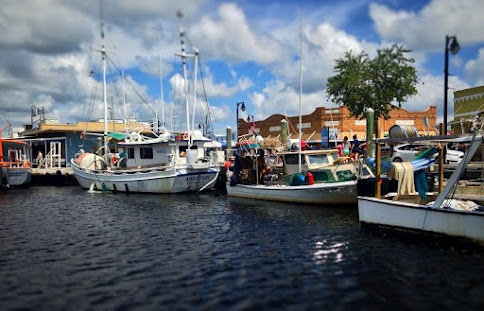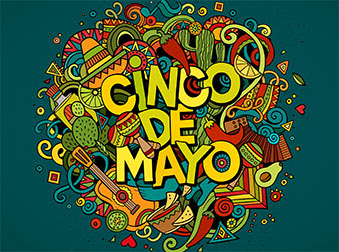I was probably around five years old when I first became familiar with Tea Pot Dome, a small rural highway junction in southwestern Michigan. This was long before I had ever heard of the infamous government scandal beginning in May 1921. Before the Watergate scandal in the mid 1970s, Teapot Dome was considered to be the greatest scandal in the history of American politics.
Teapot Dome is the prominent butte situated in the Salt Creek oil field north of Casper, Wyoming where oil was first struck in 1889. It soon became one of the most productive oil strikes in the western United States. By 1915, a portion of the Salt Creek field (often referred to as Salt Creek Dome and Teapot Dome because of a nearby landmark) was designated a Naval Petroleum Reserve, a federally controlled oil resource.
The scandal involved Secretary of the Interior Albert Fall, in the cabinet of President Warren G. Harding (1921-1923), and Secretary of the Navy Edwin C. Denby. Harding appointed Fall as Interior Secretary in March 1921 and shortly thereafter Harding signed an executive order approving Denby’s request to transfer control of the naval oil reserves at Teapot Dome from the Department of the Navy to the Department of Interior. Fall then proceeded to grant friends in the oil business exclusive rights to drill for oil on this federal land and to control government oil reserves without open bidding; this in exchange for over $400,000 in personal loans and gifts which he used, in part, to expand and improve his New Mexico ranch.
The Wall Street Journal made public these illegal transactions in April 1922. Following Harding’s death in office in August 1923, Wisconsin Senator Robert M. La Follette urged the Senate to launch an investigation into the oil leases and Fall's actions. The Senate Committee on Lands and Public Surveys conducted an inquiry and concluded in 1924 that the Teapot Dome leases had been fraudulent and corrupt. Both Denby and Fall were forced to resign from office as a result. Fall was convicted in 1929 of accepting bribes becoming the first US cabinet member to be to be found guilty and imprisoned for crimes committed while in office. He spent one year behind bars. The Teapot Dome scandal outraged Americans shocked by this unprecedented level of corruption within the federal government and President Harding’s early popularity quickly eroded to the point that he is now considered one of this country’s worse leaders.
I knew nothing of this major scandal at age five. For me, Tea Pot Dome was a rural highway junction in Van Buren County Michigan, a landmark as my family drove the 20 miles separating my maternal grandparents’ farm near Paw Paw, and my paternal grandparents’ home in Decatur. Today it is located at the T-junction of M-51, a 41-mile north–south state trunkline highway extending to the Michigan–Indiana state line near South Bend, and the Red Arrow Highway. This east-west route was originally Michigan Highway M-117 until 1926 when it was designated the former US Route 12 in Michigan. In 1952, segments of this highway in Berrien and Van Buren counties were dedicated in honor of 32nd Infantry Division of the United States Army formed from Army National Guard units from Michigan and Wisconsin which fought primarily in the two World Wars. A red arrow was the divisional insignia and it became popularly known as the Red Arrow Division. Until 1960, when Interstate 94 was completed across Michigan, it served as the main route between Detroit and Chicago and the highway we always took when we visited from our home in Illinois and later in Wisconsin. I should note that Michigan became the first state to complete a border-to-border toll-free Interstate highway extending for 205 miles thereby creating the longest toll-free freeway in the United States at the time.
The relatively short distance between the farm and Decatur did not seem so to a young boy sitting in the back seat anxious to get to where he was going. Since Tea Pot Dome was approximately half way, I was always on the lookout for the junction’s blinking light and the adjacent small black concrete building with a large white tea pot painted on its sides. Then I would know we were half way to where we were headed. I thought the name funny, but I never though about its significance until years later when I first learned about the Wyoming scandal. Even then, I thought it a rather curious point of reference for a rural highway junction in Michigan and I began to wonder if it had anything to do with those events in Wyoming decades earlier.
Just recently, while conducting genealogical research on my Michigan ancestors, I once again began to consider the significance of the reference. Doing some research into the subject I quickly ran across a recording of a program aired on National Public Radio’s Western Michigan University affiliate WMUK in Kalamazoo a few years ago. “Why’s That” was a short broadcast telling little known stories about southwestern Michigan. There had been an inquiry into the origin of the Tea Pot Dome junction near Paw Paw and WMUK had done the groundwork to solve the mystery. Today there is a familiar green and white highway sign a short distance from the junction (it was not there during my early visits to the area), and the inquirer had wondered if it had some geographic significance. He did not think this the case; there was nothing else in the area to suggest this. The area is not incorporated nor does it show up as such on the Van Buren County plat maps. So does it have something to with the infamous political scandal almost a century ago? As it turns out, it does.
The story begins in the early 1920s when a Chicagoan by the name of Chris Henderson left the city on the advice of his doctor and moved to southwestern Michigan, settling with his wife on Lake Cora, just a short distance from the junction. There he opened the Chris Henderson Service Station providing Texaco gasoline and oil to travelers on the old M-117 between Chicago and Detroit. And so it remained until the late summer of 1924. WMUK managed to track down Henderson’s granddaughter in nearby Lawrence, Michigan for the rest of the story. She told WMUK that she had always heard how her grandfather was discussing the Teapot Dome scandal with a friend that year when the scandal was getting a great deal of press coverage. They both thought it would be an interesting and catchy name for Henderson’s business. She did not think her grandfather was trying to make a political statement when he renamed his service station Tea Pot Dome (three words instead of two). The name stuck and soon her grandmother opened the small Tea Pot Dome restaurant. Add to this a collection of tourist cottages, a farmers market and baseball field and Tea Pot Dome began to show up on some maps of Michigan although it remains unincorporated. A roller rink was added some time in the 1930s and my mother has told me stories of going there with friends to skate and for dances while my father was serving overseas during the war. Gone today are the service station, the cottages, and the roller rink, but the junction has an official highway sign and the restaurant is still serving food almost a century later.
As it turns out, Henderson was not the only individual to associate his service station to contemporaneous events in the Wyoming oil fields. In 1927, a Dutch immigrant moved to Pentwater, Michigan some 120 miles north of Paw Paw on the shores of Lake Michigan and established a Sinclair Oil service station on Main Street (US Route 31). He later added a store which together he called Teapot Dome (two words instead of three). His stepdaughter later told the local historical association that the station and store were named after the famous scandal. This establishment operated until the mid 1950s when the owner died and the business was sold. It later operated as a restaurant. I can’t help but wonder whether the original owner may have passed through the junction to the south on his way to Pentwater and found the name catchy. I guess we will never know.





































